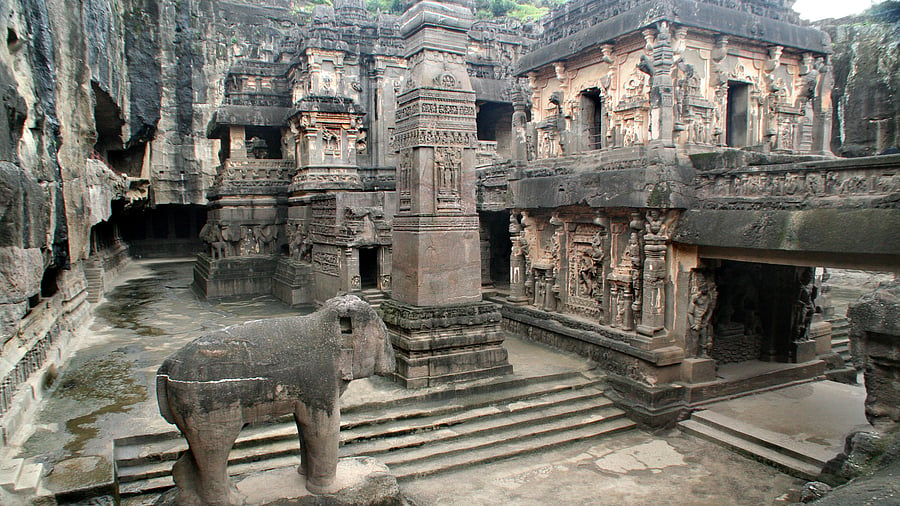
Ellora Caves.
Credit: iStock Photo
Mumbai: Water seepage has been noted in Cave No 32 of the Ellora Caves, a UNESCO World Heritage Site located in Chhatrapati Sambhajinagar in Maharashtra.
The Ellora Caves, locally known as ‘Verul Leni’ is located on the Aurangabad-Chalisgaon Road, nearly 30 km away from Chhatrapati Sambhajinagar, earlier known as Aurangabad.
Ellora is also world famous for the largest single monolithic excavation in the world, the great Kailasa, which is Cave No. 16.
The invaluable ensemble of 34 caves at Ellora in the Charanandri Hills includes Hindu, Buddhist and Jain caves.
Maharashtra’s Leader of the Opposition in Legislative Council Ambadas Danve flagged the issue.
“There are very few paintings in the World Heritage site of Ellora Cave complex.
"The paintings in the Jain group cave (no 32) are suffering damage due to seepages. The ninth century paintings of Gandharvas will remain only in photographs if there is no immediate intervention. The scene was the same even in last year's monsoon. Nothing constructive work has been done till date,” Danve said.
Danve urged Union Minister of Culture and Tourism Gajendra Singh Shekawat and Archaeological Survey of India to look into the issue.
Besides, he also flagged the issue to Ambassador/Permanent Representative of India to UNESCO Vishal Sharma.
Ellora, with its uninterrupted sequence of monuments dating from A.D. 600 to 1000, brings the civilization of ancient India to life, according to UNESCO.
The caves are hewn out of the volcanic basalt formation of Maharashtra, known as Deccan Trap.
The hills in which the caves are hewn, forms part of the Sahyadri ranges of the Deccan and dated to the Cretaceous era of the geological time scale (about 65 million years ago).
The hills rise abruptly from the surrounding plains on the south and west, the western surface being extensively utilised for hewing the cave complexes. The hill also supports several streams, the prominent among them being the Elaganga, which drains into the Shiv, a stream of the Godavari river system.